
Installing a solar panel system is an excellent way to reduce reliance on traditional electricity sources while contributing to the fight against climate change. However, before installing a solar panel system, you must determine is your solar compatible with electrical with your current electrical setup. This process involves understanding your current electrical setup, evaluating your energy needs, choosing the right solar panel system, and checking for compatibility with your electrical panel and wiring.
Ensuring that your solar panel system is compatible with your current electrical setup is essential because this will affect its efficiency and performance. If not adequately configured, it may cause damage to both the solar panel system and your existing electrical infrastructure. Therefore, it is crucial to thoroughly evaluate your current electrical setup before installing a solar panel system. This article will explore how you can determine if your solar panel system is compatible with your current electrical setup and what steps you can take to ensure a successful installation.
An assessment of one’s current electrical setup is necessary to determine the compatibility of a solar panel system, as it enables the identification of potential issues and modifications required for integration. Understanding electrical wiring is crucial in this process, as it provides important information on the type and capacity of circuits currently being used in the home. This will help determine whether the existing electrical setup can handle additional power generated by a solar panel system.
To fully understand one’s current electrical setup, consulting with a licensed electrician or engineer is recommended. They can assess the condition and capacity of the electrical system and identify any safety concerns that need to be addressed before installing a solar panel system. It is important to note that working with electricity can be dangerous, so safety precautions must be taken when handling wires or circuits.
In addition to ensuring safety during installation, understanding one’s current electrical setup also helps identify any modifications required to properly integrate a solar panel system. For instance, if there are circuit overloads or insufficient panels installed in certain areas around the house, these issues may need to be addressed before adding more power through a solar panel system.
Understanding your current electrical setup is essential in determining whether your home is compatible with a solar panel system. A thorough assessment performed by an expert will ensure compatibility and adequate safety measures and modifications necessary for optimal performance and savings over time.
To accurately assess the feasibility of implementing a solar panel system, it is essential to determine one’s energy requirements and consumption patterns. Calculating one’s energy consumption will provide valuable insights into the electricity needed to power a home or business. This information is required to determine the appropriate size of a solar panel system and ensure compatibility with one’s current electrical setup.
To calculate one’s energy needs, there are three important factors: appliances and devices used, usage times, and energy efficiency ratings. Firstly, it is necessary to create a list of all electrical appliances and devices used on the premises. Secondly, record usage times for each appliance or device daily over seven days; this information can be obtained using an energy monitor or smart meter. Thirdly, research the rated energy efficiency for each appliance or device in terms of watts per hour (Wh) or kilowatts per hour (kWh).
Once you have gathered this information, calculating your monthly kWh consumption is easy. Simply multiply your daily kWh usage by 30 (the number of days in a month). The resulting figure estimates your monthly electricity consumption, which can be used as a baseline to determine the appropriate size for your solar panel system.
Determining one’s energy requirements before investing in solar panels is crucial for ensuring compatibility with existing electrical infrastructure and sizing appropriately. By calculating consumption based on devices used, usage times, and their respective efficiencies, homeowners can establish accurate estimations to guide decisions regarding the purchase & installation process involved with their new renewable-energy source.
When it comes to choosing the right solar panel system, there are several factors that you need to consider. Firstly, it is essential to research different types of solar panels available in the market and assess which option would be most suitable for your needs. Secondly, you must consider the size of your rooftop, as it will determine how many panels you can install and generate energy from. Finally, factor in your budget before deciding which solar panel system to purchase, as prices can vary greatly depending on the type and quality of panels chosen.
Researching different solar panel options can help determine compatibility with your current electrical setup, as different panels may have varying specifications and requirements. When comparing efficiency, examining the amount of electricity a solar panel produces per unit area is important. This will help you choose the most efficient panels for your specific needs. Additionally, the cost comparison is an essential factor to consider when researching different solar panel options. While higher-end panels may be more expensive initially, they may offer better long-term returns on investment due to their higher efficiency and durability.
Another consideration when researching different solar panel options is the type of panel technology used. Some popular types include monocrystalline, polycrystalline, and thin film. Monocrystalline panels are known for their high efficiency but tend to be more expensive than other types. Polycrystalline panels are slightly less efficient but are typically more affordable than monocrystalline ones. Thin-film panels are lightweight and flexible but less efficient than their crystalline counterparts. By understanding these differences in technology and matching them with your specific energy needs and budget constraints, you can decide which solar panel option will work best for you while ensuring compatibility with your current electrical setup.
Considering the size of your rooftop is crucial in determining the feasibility of installing solar panels and maximizing their potential energy output. Before investing in a solar panel system, it is important to conduct a roof inspection to ensure that it can support the weight and size of the panels. A professional inspector can assess whether there are any structural issues, leaks, or damage that need to be addressed before installation.
Another factor to consider when assessing rooftop compatibility is shade analysis. This involves identifying obstacles or objects blocking sunlight from reaching the solar panels, such as trees, chimneys, or neighboring buildings. Shade analysis is important in ensuring maximum energy output from your solar panel system. It allows for proper placement and orientation of panels to avoid shaded areas during peak sun hours. With a clear understanding of your rooftop’s size and shading, you can decide what type of solar panel system will work best for your household’s energy needs.
Factor | Considerations |
Roof Size | Adequate space for panels |
Orientation | Proper alignment with sun path |
Pitch/Incline | Optimal angle for maximum efficiency |
Obstructions | Shading from trees or buildings |
Roof Condition | Structurally sound for installation |
Budget | Financial feasibility for actor |
The financial feasibility of installing a solar panel system is important to consider when determining compatibility with your current electrical setup. The cost of equipment and installation can vary widely depending on factors such as the size of your rooftop, the energy needs of your household, and the technology used in the panels and inverters. Maximizing efficiency is key to reducing costs over time, so it’s important to choose a system that generates enough electricity for your needs while also being affordable.
One cost-saving strategy to consider is purchasing high-quality solar panels backed by warranties and have a long lifespan. This will ensure that you get the most out of your investment over time without prematurely replacing equipment. Another strategy is to take advantage of government incentives such as tax credits or rebates for renewable energy installations. By factoring in these considerations and creating a budget plan that prioritizes efficient use of resources, you can determine whether a solar panel system is compatible with your current electrical setup and make an informed decision about investing in renewable energy technology.
Before installing a solar panel system, it is important to check the compatibility of your electrical panel. This involves determining the amperage and voltage of your current setup, confirming the type of electrical panel you have, and checking for available space. By conducting these checks, you can ensure that your solar panel system will work efficiently and safely with your existing electrical infrastructure.
To determine the compatibility of your solar panel system with your current electrical setup, it is important to assess the amperage and voltage requirements of both systems. This will help you ensure that the solar panel system will produce enough power to meet your household’s needs without overloading or damaging your existing electrical system. To calculate the amperage and voltage requirements, follow these steps:
By following these steps, you can determine whether or not your solar panel system is compatible with your current electrical setup and ensure that both systems work together safely and efficiently.
Confirming the type of electrical panel is crucial in ensuring that the solar power system can seamlessly integrate with the existing electrical setup. Different types of electrical panels have varying compatibility with solar panels. For instance, older panels may not be able to handle the increased electricity output from a solar panel system, while newer models are likely to accommodate it. It is, therefore, necessary to confirm your current electrical panel’s capacity and functionality before installing a solar panel system.
One way to confirm whether your electrical panel is compatible with a solar power system is by consulting an electrician or a licensed installer. They can assess your existing electrical setup and determine if any upgrades are required to seamlessly integrate the two systems. Additionally, it is essential to take safety precautions when dealing with electricity and ensure that all installations comply with local regulations. By confirming the type of electrical panel and taking relevant safety measures, you can enjoy maximum benefits from your solar panel system without compromising safety or efficiency.
Electrical Panel Type | Compatibility |
|
|
Fuse Box | Not recommended for large or complex systems |
Circuit Breaker Panel | Compatible with most small-medium sized systems |
Main Service Panel | Compatible with most large-sized systems; may require upgrades |
Table 1: Electrical Panel Types-Compatible Solar Power Systems
The availability of adequate space is a crucial factor to consider when installing a solar power system. Before installing a solar panel system, it is important to confirm that enough space is available for the panels and other equipment required for the setup. The size and number of panels needed depend on energy requirements, location, and orientation.
To ensure enough space is available for the installation process, it may be necessary to make some modifications to the current electrical setup. This could involve changing the existing wiring or upgrading the electrical panel if it has insufficient capacity to handle the added load from the solar panels. You should consult with a professional electrician before making any necessary modifications to your electrical setup. By doing so, you can ensure that your solar panel system is compatible with your current electrical setup and avoid any potential safety hazards or damages in the future.
When evaluating the wiring for your solar panel system, there are three key points to remember. First and foremost, ensure proper grounding of all electrical components to reduce the risk of electric shock or fire hazards. Secondly, check for overheating or any signs of damage to the wiring that could compromise the safety and efficiency of your system. Lastly, verifying compatibility with your solar panel system is crucial to avoid any issues with function or output. By taking these steps, you can ensure that your solar panel system is safe, effective, and efficient in meeting your energy needs.
Proper grounding is essential to ensure a solar panel system’s safe and efficient functioning. The grounding involves connecting the electrical system to the earth, which protects against electrical shocks and reduces the fire risk during a short circuit. Safety measures must be taken during this process to avoid electrocution or damage to equipment. Grounding rods should be installed at least 6 feet deep in moist soil, and all connections should be made using copper wire that is properly sized for the current load.
The installation process of proper grounding involves attaching one end of a copper wire to the solar panel’s frame, running it through conduit pipes and rods into the ground, then connecting it to an earth terminal or ground rod. All connections must be tight and secure, as loose connections can cause resistance issues that could lead to overheating or failure of your solar panel system. Proper grounding protects your panels from lightning strikes or other power surges during severe weather conditions. In summary, ensuring proper grounding is crucial for maintaining safety and functionality in your solar panel system.
Previously, we discussed the importance of properly grounding for your solar panel system. This is crucial to prevent electrical shock and other hazards. However, another issue that you need to look out for is overheating.
Overheating can occur when your solar panel system is not functioning properly or when there are external factors such as high temperatures or lack of ventilation. This can lead to decreased efficiency and even damage to the panels themselves. It is important to take preventative maintenance measures and follow safety precautions to prevent this from happening. Here are some steps you can take:
By taking these steps and being proactive about preventing overheating, you can ensure that your solar panel system continues to function efficiently and safely for years to come.
Ensuring the compatibility of your electrical components with your solar panel system is crucial to avoid potential damage and ensure optimal performance, which can ultimately save you money and reduce your carbon footprint. Compatibility concerns arise when considering the electrical requirements of solar panels, inverters, batteries, and other equipment involved in a solar energy system.
Before purchasing a solar panel system, verifying that it’s compatible with your current electrical setup is essential. To do this, you need to consider both systems’ voltage and amperage requirements. The table below outlines some common voltage and amperage requirements for different electrical components of a solar energy system. By comparing these values with those specified by your existing electrical setup, you can determine whether or not they are compatible.
Electrical Component | Voltage Requirement | Amperage Requirement |
Solar Panels | 12V – 48V | Varies |
Inverter | 120V – 240V AC | Varies |
Charge Controller | 12V – 48V | Varies |
By verifying compatibility between your current electrical setup and a potential solar panel system before making any purchases or installations, you’ll be better equipped to make informed decisions about what will work best for your home or business needs. This proactive approach can help prevent costly mistakes while ensuring optimal performance from your newly installed solar panel system.
Engaging a professional solar panel installer is crucial in determining the compatibility of your current electrical setup with a solar panel system. While some may opt for DIY installation, hiring an expert has several benefits that cannot be overlooked. First, it ensures proper installation and system performance, minimizing potential safety hazards or property damage. Second, an installer can assess your energy needs and help you choose the right size and capacity of solar panels for your home or business.
When looking for a professional installer, it is important to consider their experience and certifications in solar installation. A reputable installer should have proper training and knowledge about different types of panels, inverters, mounting systems, and wiring requirements. They should also provide warranties on their workmanship and equipment used.
Once hired, the installer will inspect your electrical setup on-site to determine its compatibility with the proposed solar panel system. This includes assessing your roof or ground space for optimal placement of panels and checking if any upgrades are needed, such as electrical rewiring or circuit breakers. The installer will then provide you with a detailed estimate outlining all costs associated with the project, including permits, labor fees, equipment costs, and maintenance fees.
While DIY installation may seem cost-saving at first glance, engaging a professional solar panel installer provides peace of mind knowing that your system is installed safely and efficiently. With their expertise in design, installation process management, and maintenance requirements, they can ensure maximum efficiency from your investment which translates into savings over time and increased autonomy from traditional power grids.
Before installing a solar panel system, obtaining all necessary permits from local authorities and utility companies is essential. Permit requirements may vary depending on the installed system’s location and size. Some jurisdictions may require building permits, electrical permits, zoning permits, or environmental review permits. Failure to obtain the proper permits can lead to costly fines and delays in your solar panel system installation.
To begin the application process for obtaining necessary permits, it is recommended that you contact your local jurisdiction’s permitting office or the Department of building safety. They will provide information regarding the documents you must submit for a permit application. This might include drawings or plans of your intended solar panel system installation, fees required for the permit application process, and other relevant information.
Common permit issues that homeowners face when installing solar panel systems include incomplete applications or applications submitted without sufficient documentation. To avoid these issues, carefully read through all instructions provided by your local jurisdiction’s permitting office before submitting any applications. If you are unsure about any aspect of the application process or requirements for obtaining necessary permits, do not hesitate to reach out to officials at your local jurisdiction who can assist you in completing the process accurately.
Obtaining the necessary permits before installing a solar panel system is critical in ensuring compatibility with your current electrical setup. You should familiarize yourself with permit requirements and understand the application process before beginning any installations; this will help prevent common errors such as incomplete submissions or insufficient documentation, which could delay approval times significantly. By taking these steps proactively during installation planning stages (before construction begins), homeowners can avoid costly fines while ensuring their new clean energy source operates safely according to code regulations set forth by authorities empowered over such matters locally within one’s jurisdictional boundaries where they live today!
The installation process for a solar panel system involves several key steps that must be followed carefully to ensure optimal performance and safety. Once you have obtained the necessary permits, it is time to start installing your solar panel system. It is important to select a location that receives adequate sunlight throughout the day, as this will impact the efficiency of your system. You must also consider any potential shading from trees or nearby buildings.
Before beginning installation, you should carefully review the manufacturer’s instructions and ensure you have all the necessary tools and equipment. One important consideration during installation is ensuring that your solar panels are securely mounted in place and properly wired into your existing electrical system. If you are uncomfortable with doing this yourself, hiring a qualified professional to assist with installation is recommended.
After completing the installation, it is important to regularly maintain your solar panel system to ensure its longevity and optimal performance. This includes keeping your panels clean and debris-free, checking for any signs of damage or wear, and monitoring energy production levels over time. By following these maintenance requirements, you can help extend the life of your solar panel system while maximizing its energy output for years to come.
Having installed your solar panel system, you might want to know how it is performing. This leads us to our current subtopic: monitoring your system performance.
System maintenance and troubleshooting tips are essential in ensuring that your solar panel system functions optimally. Maintenance of the panels involves cleaning the surfaces regularly, checking for any damages, and replacing faulty components promptly. Proper maintenance will ensure that your panels operate at peak efficiency and prolong their lifespan.
Real-time monitoring provides real-time data on how much energy your system generates, indicating whether it is functioning optimally. By tracking this data, you can identify any issues affecting the performance of your solar panel system and take corrective measures quickly. Additionally, real-time monitoring gives you insights into energy consumption patterns in your home, allowing you to adjust energy usage habits and reduce electricity bills.
Monitoring the performance of a solar panel system is crucial to ensure optimal operation and longevity. System maintenance should be performed regularly to keep the panels clean and detect any faults early on before they become more significant problems. Real-time monitoring offers numerous benefits by identifying issues affecting performance quickly while also helping track energy consumption patterns in homes for better energy management practices.
In conclusion, ensuring that your solar panel system is compatible with your current electrical setup requires a thorough understanding of your energy needs and the technical specifications of both systems. Choosing the right solar panel system for optimal efficiency and performance is crucial. Checking your electrical panel compatibility and evaluating your wiring are important to ensure a successful installation.
Hiring a professional solar panel installer can provide peace of mind as they have the expertise to assess and address potential issues. Obtaining necessary permits is also essential before installing any solar panels. Finally, monitoring your system’s performance regularly is imperative to ensure it continues to function optimally over time. With these considerations in mind, you can confidently install a solar panel system that meets your energy needs while being compatible with your current electrical setup.
The typical lifespan of a solar panel system depends on various factors, including the quality of materials used, installation, and maintenance. Regular cleaning, inspection, and repairs can extend its longevity and ensure optimal performance.
Expanding the capacity of your solar panel system is possible with upgradable inverters that can accommodate additional panels. It is important to consult a professional to ensure compatibility and proper installation for optimal performance.
Maintaining a solar panel system requires regular cleaning to maximize energy production and prevent damage. Cleaning techniques involve using mild soap and water, avoiding abrasive materials, and inspecting for any signs of wear or damage. Preventive maintenance includes checking the wiring connections and monitoring performance to address any issues promptly.
Solar panel systems can provide emergency power during a grid outage. It is important to ensure that the system is designed with backup capabilities, such as battery storage or an inverter that can convert DC power into AC power, to utilize solar energy during emergencies.
A battery backup system for solar panels can provide advantages such as energy storage and power independence during outages. However, it also adds costs, maintenance requirements, and potential safety hazards. A decision should be based on individual needs and circumstances.
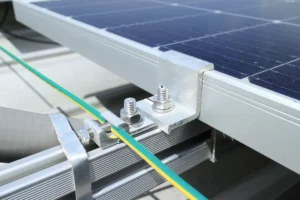
How Do I Ensure That My Solar Panel System Is Properly Grounded? Properly grounding a solar panel system is crucial to ensure safety, optimize performance,
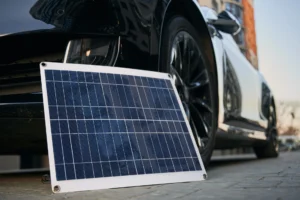
Can I Use My Ev’s Battery To Store Excess Solar Energy? The utilization of renewable energy sources such as solar power is on the rise,
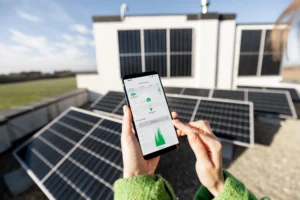
Can I Monitor The Performance Of My Solar Panel System Remotely? Solar energy is becoming an increasingly popular alternative to traditional sources of electricity. With

What Is The Difference Between Solar And Photovoltaic? Solar energy is a topic that has been gaining more attention in recent years as people become
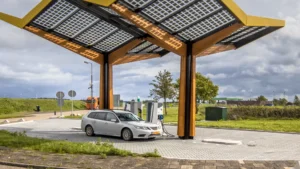
Can I Use Solar Panels To Power My Electric Vehicle? Can I use Solar Panels To Power My Electric Vehicle? The rise of electric vehicles
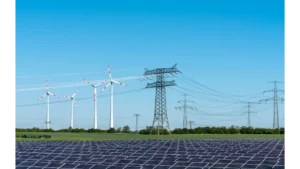
Can I Still Use Electricity From The Grid If I Have Solar Panels? Can I Still Use Electricity From The Grid ? As more and